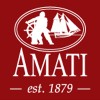MODELLING AND PASSION SINCE 1879
In 1879 Turin was undergoing a period of change: Italy was a young Kingdom, the Capital had been moved to Rome, King Vittorio Emanuele II had passed away the previous year, and his son Umberto I succeeded him to the throne.In Turin, the nobility and landowning bourgeoisie still held sway, but new social classes and industrial habits were emerging. It was a city bustling with carriage traffic and the first horse-drawn trams, with theaters and cafes abounding. The Mole Antonelliana, which would become the city's symbol, was under construction.

 English
English  Italiano
Italiano Français
Français Español
Español Deutsch
Deutsch





